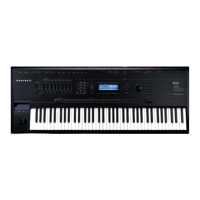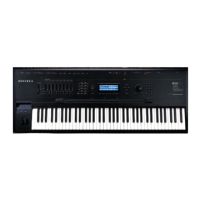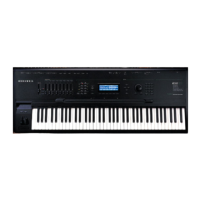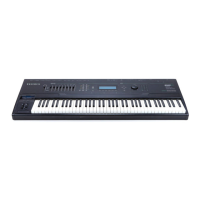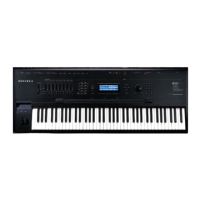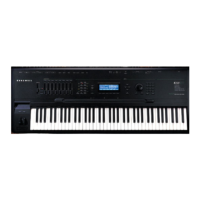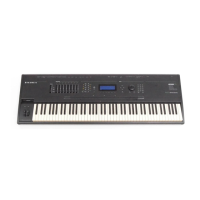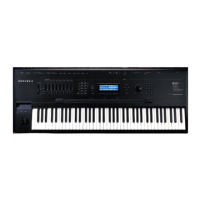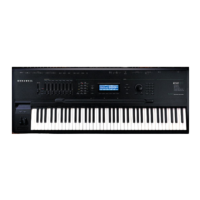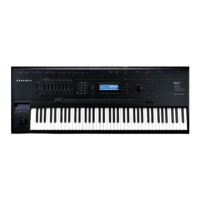Some ideas for using Live Mode
4
910309
Some ideas for using Live Mode
If youÕve ever used an old-fashioned mono analog synthesizer with an audio input (anything
from a Moog Rogue to an ARP 2500 or Serge Modular), you know how much fun it can be to
pass a musical signal through the synth and modify it in real time with the Þlters, envelopes,
modulators, etc. Live Mode brings that concept to digital synthesis, and lets you use all of the
power of the K2500 on any kind of input signal.
For starters, you can simply hook up a CD player to the K2500Õs sampling input, get a bunch of
your favorite CDs, and start fooling around. (A turntable works well too.) Here are some ideas
for going further:
Pitch changing
Unlike an analog synthesizer, the K2500 makes it possible to alter the pitch of the incoming
signal in real time. But the K2500 is not a conventional pitch shifter, so if you are used to
working with such a device you will have to alter your thinking a little.
For example, when you bend the pitch down from the unity pitch (C4), using a V.A.S.T.
function, it slows the playback of the incoming signal, but it doesnÕt change the rate at which
the signal is coming inÑyour CD is still spinning, and putting out a constant audio signal. So
as you lower the pitch, the playback lags behind, and when you return the pitch to normal, the
playback snaps back to the presentÑwhich means some of your audio literally disappears into
the ether. If you bend the pitch down and hold it there for a while, eventually the buffer Þlls up
and updates itself, and you will hear it snap forward in time, although the data playing will
continue to be slowed down. Again, some of the audio disappears.
Changing the pitch upwards is perhaps even more interesting. As you raise the pitch, the K2500
tries to play data that hasnÕt arrived yet. Instead, in the current version, playback begins from a
few seconds back (the data is held in the buffer), playing sped-up audio from the past. As with
lowered pitch, when the raised pitch returns to unity, playback snaps back to the present.
Again, when holding a note above unity pitch, you will eventually hear a repeat of a few
seconds of time, as the sample buffer loops before being able to update itself.
These details aside, all kinds of wonderful pitch effects are achievable. HereÕs an example.
•
Start with Program
759 LiveMode Default
.
•
Go to the
PITCH
page.
•
Assign
LFO1
to
Src1
, with a depth of
-200c
t.
•
In order to keep the playback from constantly crossing above unity, set the
Coarse
parameter to
-2ST
.
Or try these settings:
•
Src1
:
MWheel
•
Depth
:
-1200c
•
Src2
:
LFO1
•
On the
LFO
page, set
MnRate
:.
50Hz
,
MxRate
:
20
.00, and
RateCt
:
Data
.
•
DptCtl
:
MWheel
•
MinDpt
:
0ct
•
MaxDpt
:
1200ct
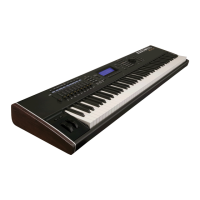
